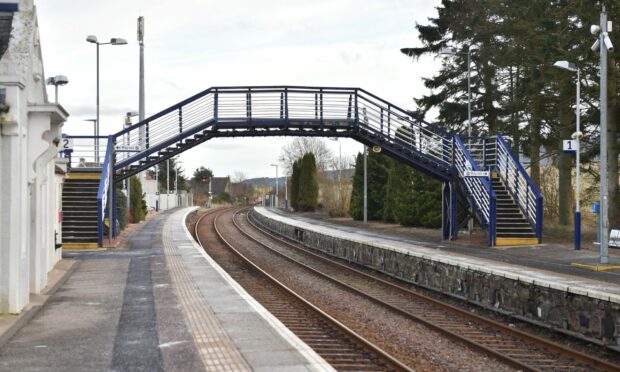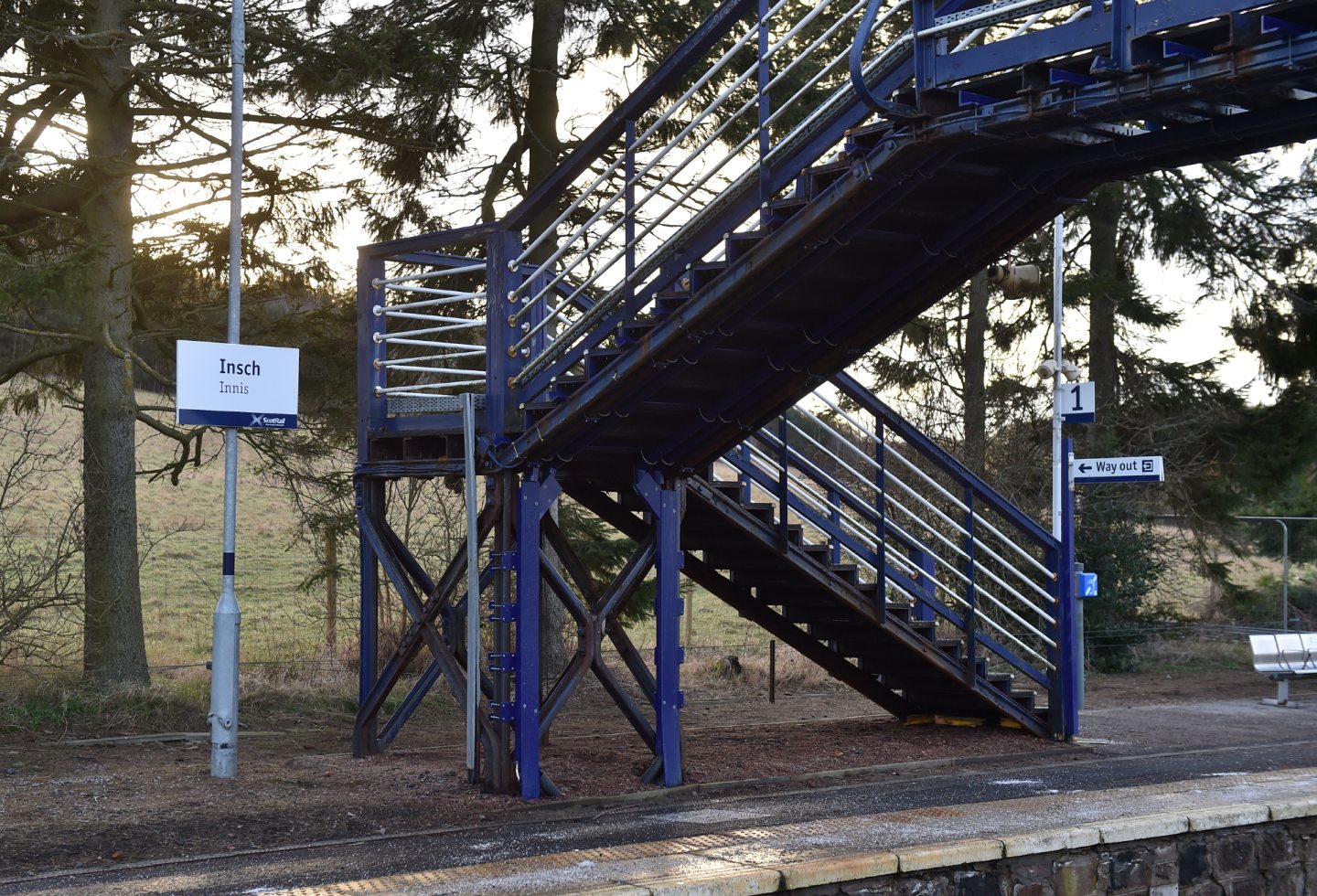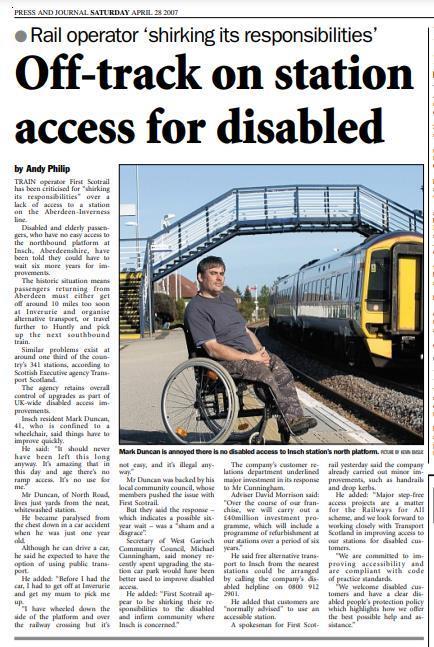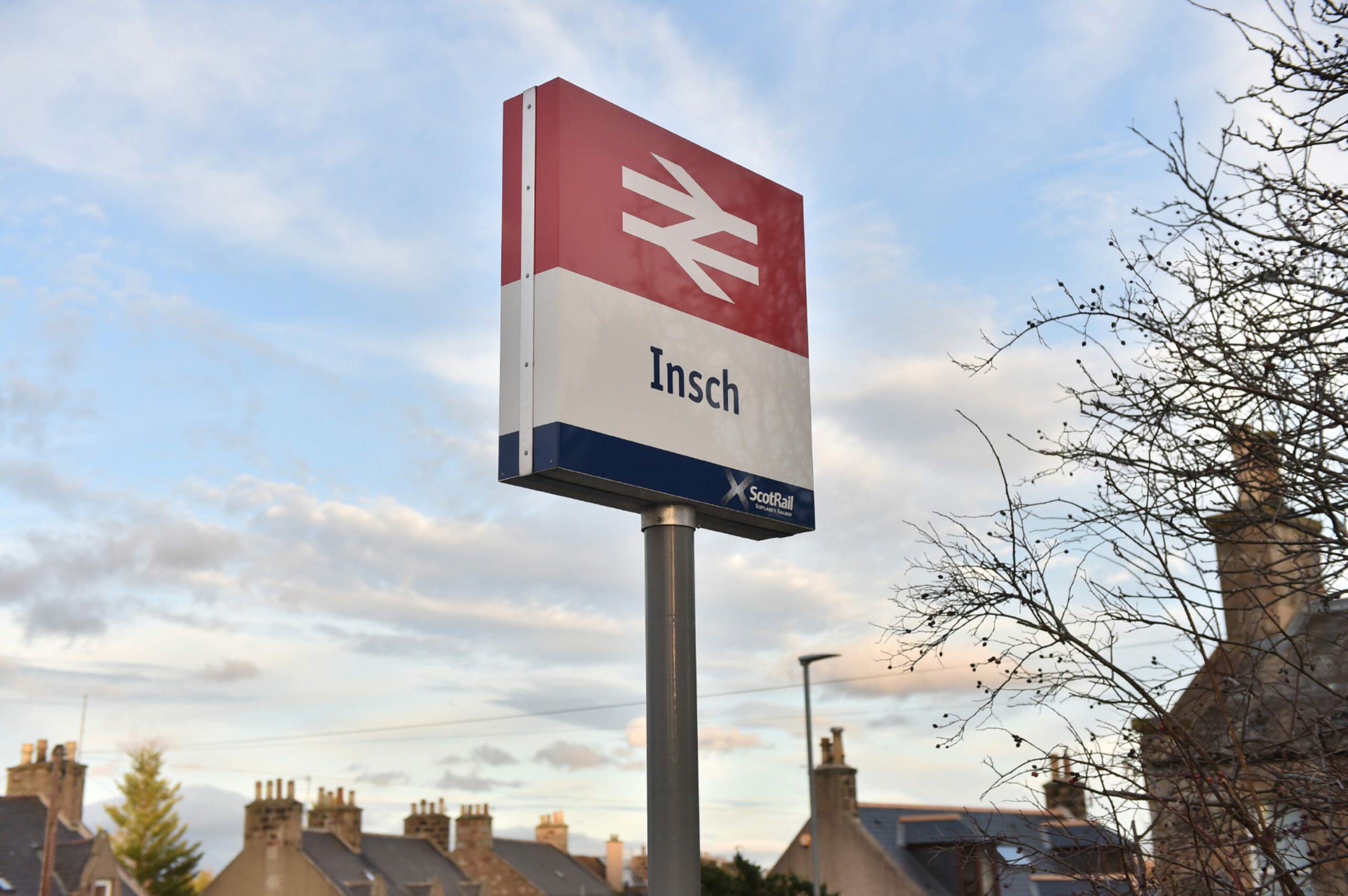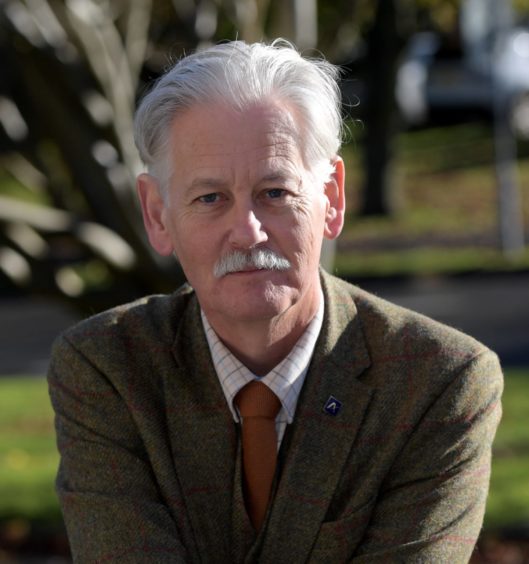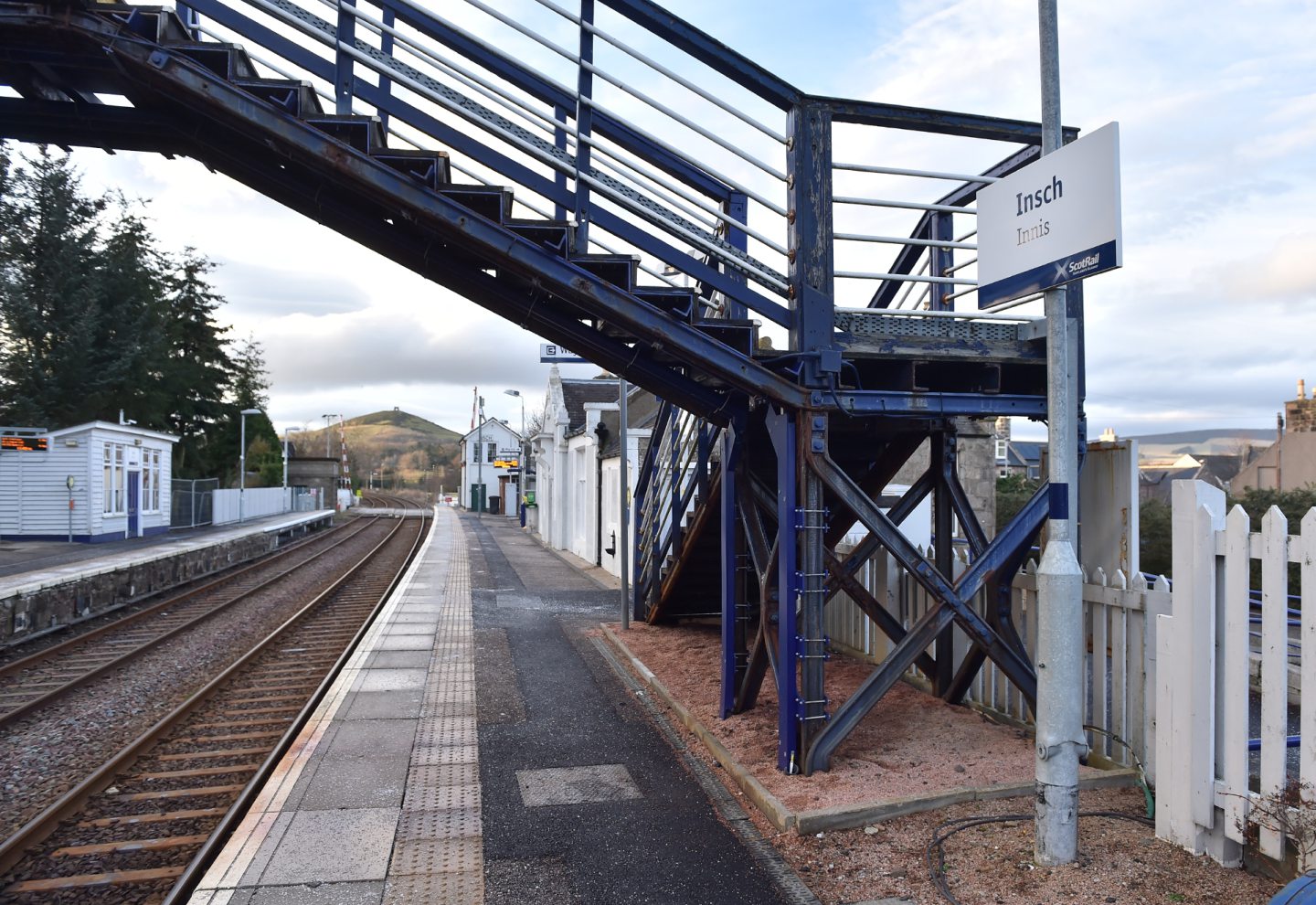Plans for £2.2 million of improvements at one of the least-accessible train stations in Scotland may soon be on the right track.
Insch Station in Aberdeenshire has been posing problems for those with mobility issues for years.
In 2007, Insch residents were told they would have to wait more than six years for improvements.
But 14 years later, the situation remains the same.
It is currently the only station in the north-east where both platforms are not accessible to all users, as there is currently no step-free access to Platform One.
This means some travellers have to transfer to other, accessible stations.
The nearest accessible station is around 15 miles away in Kintore.
And it’s not just those with mobility issues, such as wheelchair users, who face difficulties at the station.
Parents with pushchairs also face challenges, as do the elderly.
What’s being done to make it more accessible?
But change could soon be arriving at the Insch railway platforms.
The regional transport board Nestrans has been working to figure out the best solution for accessibility at the station.
It was awarded more than £38,000 in 2018 through the Local Rail Development Fund to help part-fund accessibility appraisal studies.
Following these studies, Nestrans agreed to move forward with recommendations for a plan to remove the current footbridge, and install a new footbridge with lifts.
This plan would cost an estimated £2.29 million.
A Nestrans report said this plan would provide a “step-free platform to platform access solution that would enable increased travel opportunities for all users at the station including, but not limited to, those with mobility impairments, the ageing population, and people with young children.”
‘This situation is completely unacceptable in the 21st century’
Peter Argyle, vice chairman of Nestrans and chairman of Aberdeenshire Council’s infrastructure committee, has called on Transport Scotland and Network Rail to “move swiftly and positively” to help make the proposals a reality.
He said: “I am pleased that all of the technical aspects of this comprehensive study have been accepted by Transport Scotland.
“Insch Station is recognised as one of the poorest in Scotland for access, with no step-free access to platform one, while the nearest fully accessible station is some 15 miles away at Kintore.
“I have long argued that this situation is completely unacceptable in the 21st century and have been very supportive of the work Nestrans has done, with the local community, to develop detailed proposals to tackle this problem.
“I hope that Transport Scotland and Network Rail will now respond swiftly and positively, accept the clear case that has been made and allow this essential work to proceed without delay.”
Transport Scotland’s response
A spokeswoman for Transport Scotland said that the body welcomed the results of the studies by Nestrans to find out the best option for improving accessibility at Insch Station.
She said the Insch plans could be in line for funding from the UK Government’s Department for Transport (DFT).
She said: “Accessibility is a reserved matter under the devolution settlement and for rail accessibility, there is a DFT-sponsored fund; Access for All, that enables eligible projects to be supported.
“Transport Scotland welcome Nestrans’ feasibility studies in improving accessibility at Insch Station.
“However, Insch Station, along with other feasibility studies, will be considered as part of the wider prioritisation of infrastructure projects under Strategic Transport Projects Review Two, which is expected to be published later this winter.
“The DFT announced an accessibility audit for all UK stations and this is currently underway.
“This single methodology will provide a significant boost for people to plan their journeys by rail.”
And a spokesman for Network Rail added: “Accessibility improvements across Britain are funded by the DFT and delivered locally by ourselves and Transport Scotland.
“We work closely with Transport Scotland, local government and our train operators to review accessibility at stations in Scotland and upgrade as many as possible for our customers.”
